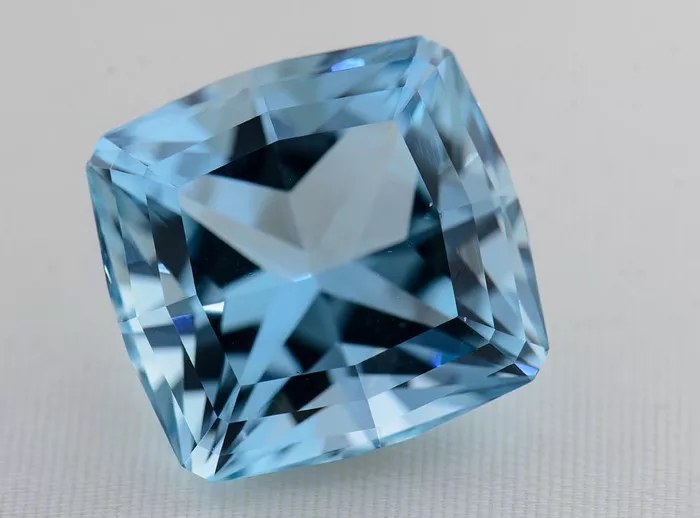Aquamarine is a stunning gemstone known for its captivating blue color that resembles the hues of the ocean. Its name is derived from the Latin words “aqua” meaning water and “marina” meaning sea, which perfectly describes its ethereal appearance. This precious stone has been revered for centuries for its beauty and symbolism. In this article, we will dive deeper into the origins and formation of aquamarine, shedding light on where it takes place.
The Geological Occurrence of Aquamarine
Aquamarine, like other gemstones, is formed deep within the Earth’s crust under specific geological conditions. It belongs to the beryl family, a mineral group that includes emerald and morganite. The primary ingredients required for the formation of aquamarine are beryllium, aluminum, silicon, and oxygen.
Pegmatite Deposits
Aquamarine is commonly found in pegmatite deposits, which are coarse-grained igneous rocks characterized by their large crystal sizes. Pegmatites form during the final stages of magma cooling, allowing sufficient time for the growth of sizable crystals. These unique geological environments provide the ideal conditions for the formation of aquamarine.
Pegmatite deposits can be found worldwide, but some notable locations include Brazil, Madagascar, Afghanistan, and Pakistan. Brazil, in particular, is renowned for producing significant quantities of high-quality aquamarine gemstones.
Granite-Associated Veins
Aquamarine can also be found in granite-associated veins. Granite, an intrusive igneous rock, contains minerals such as feldspar, quartz, and mica. During the formation of granite, hot fluids rich in mineral content circulate through fractures and faults within the rock. These hydrothermal fluids carry dissolved elements, including beryllium, which can crystallize over time to form aquamarine.
Granite-associated veins are commonly found in regions with extensive granite formations, such as the Ural Mountains in Russia, the Erongo region in Namibia, and the Mount Antero area in Colorado, USA.
Alluvial Deposits
In addition to pegmatite deposits and granite-associated veins, aquamarine can also be found in alluvial deposits. Alluvial refers to sediments deposited by rivers, streams, or other running water sources. Over time, the movement of water erodes rocks, dislodging aquamarine crystals from their original geological source and transporting them to riverbeds or gravel bars.
Alluvial deposits are often located downstream from the primary sources of aquamarine, which may include pegmatites or granite veins. Notable alluvial mining sites for aquamarine include Nigeria, Mozambique, and Zambia.
Factors Influencing Aquamarine Formation
The formation of aquamarine is influenced by various factors that determine its quality, including:
Temperature and Pressure
Aquamarine forms under specific temperature and pressure conditions within the Earth’s crust. The cooling rate of magma or hydrothermal fluids affects crystal growth, resulting in different gemstone qualities. Slow cooling allows larger crystals to form, leading to high-quality aquamarine specimens.
Chemical Composition
The chemical composition of the surrounding rocks and fluids plays a crucial role in aquamarine formation. The availability of beryllium, aluminum, silicon, and oxygen determines the concentration of these elements within the crystal lattice structure of aquamarine.
Geological Events
Geological events such as tectonic movements, volcanic activity, and erosion can create the necessary conditions for aquamarine formation. These events can either expose existing aquamarine-bearing rocks or introduce new sources of beryllium-rich fluids into the geological system.
Environmental and Ethical Considerations
When exploring the origins of aquamarine, it is essential to consider the environmental and ethical aspects of its extraction. Mining can have significant environmental impacts, including habitat destruction, soil erosion, and water pollution. Responsible mining practices aim to mitigate these effects by implementing measures such as land rehabilitation and water management systems.
In recent years, there has been a growing demand for ethically sourced gemstones, including aquamarine. Ethical mining practices prioritize fair labor conditions, community engagement, and transparency in the supply chain. Certifications such as the Kimberley Process Certification Scheme and Fairtrade Gold provide reassurance that the gemstone has been sourced responsibly.
Conclusion
Aquamarine’s breathtaking beauty is a result of its formation deep within the Earth’s crust over millions of years. Its occurrence in pegmatite deposits, granite-associated veins, and alluvial deposits provides a diverse range of sources worldwide. Understanding the geological processes involved in the formation of aquamarine helps us appreciate its rarity and value.


